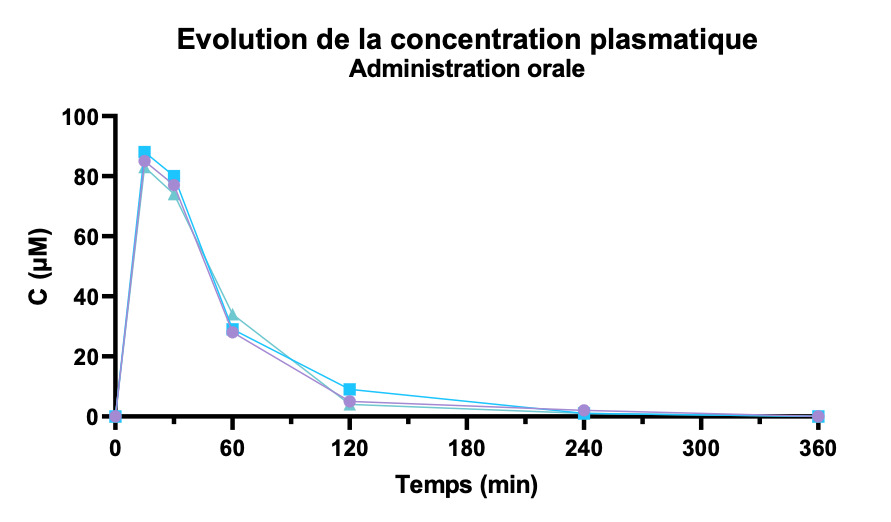Pharmacokinetics is the study of the becoming of a drug candidate in the organism by the analysis of the evolution of plasmatic concentration over time. It depends of the physiochemical characteristics of the drug candidate and is characterized by 4 steps (ADME) = Absorption, Distribution, Metabolization and Elimination.
The distribution of the compound, since the blood towards the targeted organs for its principal activity or towards other tissues or organs, which can bring to the apparition of undesirable effects, is notably determined by the measure of the compound in the different organs at a given time.
The pharmacokinetics settings of a drug determinates its posology, but also the choice of the route recommended by the administration and the most appropriated galenic form.
Pharmacokinetics settings of the absorption
– Maximal concentration of the principal asset in the vascular compartment (C max)
– Necessary time of the principal asset for the reaching of the maximal concentration (T max)
– Kidney clearance (capacity of the kidney to extract the drug and/or its metabolites of the blood volume)
– Half-life (how much time for the reduction of 50% of the principal asset plasmatic concentration)

